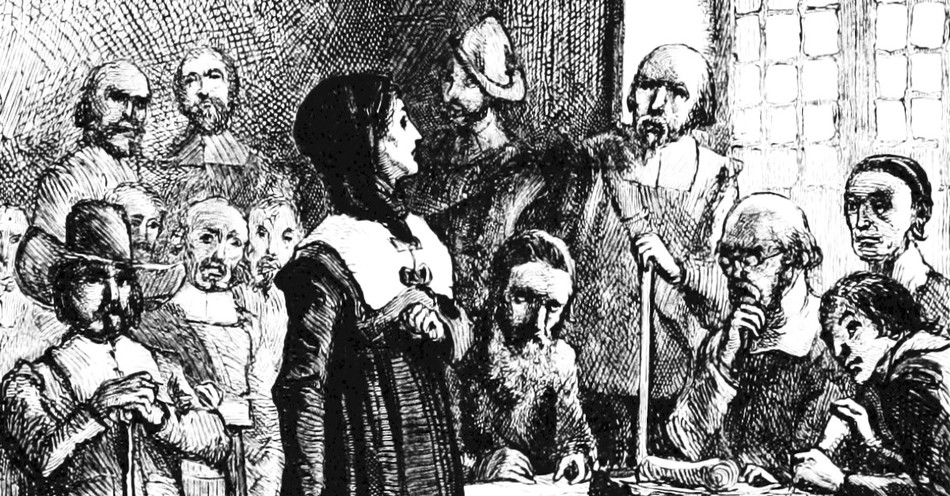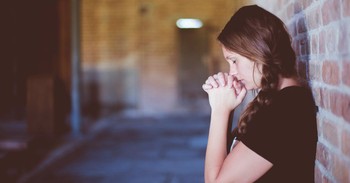Anne Hutchinson was more than a woman ahead of her time; she was a woman intent on changing her time.
Staying true to her biblical beliefs even in the face of opposition from members of her own church, she maintained the covenant of grace described in Ephesians 2:8-9: “For by grace you have been saved through faith, and that not of yourselves; it is the gift of God, not of works, lest anyone should boast.”
Whether she was a teacher, preacher, or feminist is often subject to debate. Regardless, her willingness to stand firm on biblical principles over human traditions is clear.
How did she go from being one of John Cotton’s most trusted members to being banished? It all started with learning to read the Bible for herself.
Was Anne Hutchinson a Puritan or a Pilgrim?
The Pilgrims and the Puritans were religious groups that wished to reform the Church of England to follow the early Christian church of the New Testament more closely.
The Pilgrims, also known as Separatists, felt the only way to be true to their conscience was to separate themselves from the church. Since this was considered treason, many fled to the Netherlands and later the New World for religious freedom. Puritans wanted to purify the church from within but eventually left for the New World as an investment and an opportunity to create a church following their congregational way instead of the structured service of the Church of England.
While the Puritans wanted more freedom in worship, they did not allow much freedom to their members. They had strict guidelines for behavior but still believed strongly in education so that everyone could read the Bible for themselves. Some other highly important Puritans included Jonathan Edwards, John Bunyan, Anne Bradstreet, and John Milton.
When Did Anne Hutchinson Emigrate to America?
Since a Puritan minister raised Hutchinson, her father insisted she learn to read. She also trained as a midwife. While still in Alford, England serving as a midwife, she began teaching Bible studies in her home with other women. When Charles I took the throne in 1626, Puritans began to be persecuted, leading to large numbers fleeing to the New World.
After John Cotton fled England in 1633, the British government closed the borders so no one else could immigrate to Massachusetts. After receiving a revelation during her private Bible study, Hutchinson and her family, including ten children, evaded British authorities and fled England in 1634. They followed John Cotton to Boston, where Hutchinson became one of his inner circle.
What Controversies Led to Anne Hutchinson Being Put on Trial?
In Boston, Hutchinson continued her role as a midwife and Bible teacher to the women in the congregation. She held Bible studies in her home, teaching that anyone with a personal relationship with God could obtain heaven; therefore, sin did not affect your salvation. This went against Puritan beliefs that your salvation must be proven through rigorous adherence to rules of behavior. Governor John Winthrop and John Cotton suspected she had become a separatist and banned meetings in her home. Hutchinson was called before the General Court in 1637 when she ignored the warnings.
After two days of debate during her trial, her final statement detailed her personal relationship with God. Still, her prophecy that the court and the colony would face retribution from God because of their treatment of her was the final straw. Seeing it as a challenge to authority, the men proclaimed her a heretic and banished her.
What Happened to Anne Hutchinson After Her Trial?
Hutchinson was placed under house arrest until March 1638, when she and 30 other families moved to Rhode Island and founded Portsmouth. Winthrop and Cotton continued to spread rumors about Hutchinson delivering demon children. So, when her husband died in 1642, she took her children to the Dutch colony of New Amsterdam, where there were violent conflicts with local Native American tribes.
Hutchinson was a vocal critic of the Pequot War and showed a rare tolerance for Native Americans. When word came of a native attack, Hutchinson and her family remained in their home while their neighbors fled, believing God would protect them. Siwanoy warriors invaded the home and killed Hutchinson and six of her children before burning the house with their remains still inside.
How Did Anne Hutchinson Advocate for Women’s Rights?
Dan Graves summarizes Hutchinson’s life and how she can be considered an early American feminist:
“Anne Hutchinson was born in Alford, England. The first historical record of this woman who did so much to free women from societal chains is religious. It is the record of her christening on this day July 20, 1591. She may be thought of as the premier American feminist, yet her entire life was linked to the church.
Anne received teenage experience as a midwife, helping her own mother in her later pregnancies. She became skilled at the practice. The mothers and babes she attended had far higher survival rates than usual and this brought her great influence among the women she worked with both in Alford and later when she moved to Massachusetts.
After marriage to William Hutchinson, Anne bore a number of children of her own. Most survived to adulthood, a rarity for the time. She and William fell under the spell of the preaching of John Cotton at Boston, England. On every occasion they found excuses to make the then lengthy trip to hear him. Cotton was preaching several sermons a week, and so they could hope to catch one any time they visited Boston.
Anne’s father had taught her as he would a son. He himself had suffered a good deal for his convictions. As she grew older, Anne began to fuse religious and political ideas. Why should not women be as free as men? Queen Elizabeth had proven herself a better ruler than the men who preceded and followed her. Women clearly were not inferior creatures. She pored over scripture and became convinced that God meant woman to be man’s equal. Jesus had elevated the status of women by his actions. She came under the spell of the Familists who called for such equality and held that there was no such thing as original sin. Other women sought her for instruction and trusted her because she had a proven track record of assisting them with their dangerous and fearsome pregnancies.
Within a short time of each other, Cotton and the Hutchinsons migrated to America. There Anne, with her women’s groups, Familism and unorthodox theology, appeared a threat to the authorities. Her followers became known as Hutchisonians. In part owing to her influence, John Winthrop lost power.
Eventually he put her on trial. She contended strongly in her self-defense, reminding her accusers that the Bible permitted elder women to teach younger. Her groups for women were not in violation of scripture. If some men chose to attend her group, that did not make her wrong. In fact, she added triumphantly, the men of the court by questioning her, were allowing her to teach them. Winthrop, with a packed court (he had called special elections to seat his own followers) banished Anne from the colony.
She joined Roger Williams at Rhode Island and was killed by Indians.
Bibliography:
1. “Hutchinson, Anne.” Dictionary of American Biography. New York: Scribner, 1958-1964.
2. “Hutchinson, Anne.” Encyclopedia of American Biography. Edited by John A. Garraty. New York: Harper and Row, 1974.
3. Williams, Selma R. Divine Rebel: the life of Anne Marbury Hutchinson. New York: Holt, Rinehart and Winston, 1981.
4. Wilson, Woodrow. History of the American People. New York: Harper and Bro., 1902. Source of the image.
5. Various encyclopedia articles.”
(“Original Anne Hutchinson Christened” by Dan Graves, MSL, was originally published on Christianity.com on May 3, 2010)
Photo Credit: Public domain image from 1876 book by William Cullen Bryant, provided by Flickr and the British Library.
Linda Lyle is a writer, teacher, knitter, and unintentional collector of cats. She has written articles for the Alabama Baptist, Open Windows, Refresh, as well as multiple novels and novellas. Her newest book, 5-Minute Prayer Plan for When Life Is Overwhelming, is set to release in October. She spins yarns on her blog The End of My Yarn at lindalyle.com.
This article is part of our People of Christianity catalog that features the stories, meaning, and significance of well-known people from the Bible and history. Here are some of the most popular articles for knowing important figures in Christianity:
How Did the Apostle Paul Die?
Who are the Nicolaitans in Revelation?
Who Was Deborah in the Bible?
Who Was Moses in the Bible?
King Solomon's Story in the Bible
Who Was Lot's Wife in the Bible?
Who Was Jezebel in the Bible?
Who Was the Prodigal Son?



